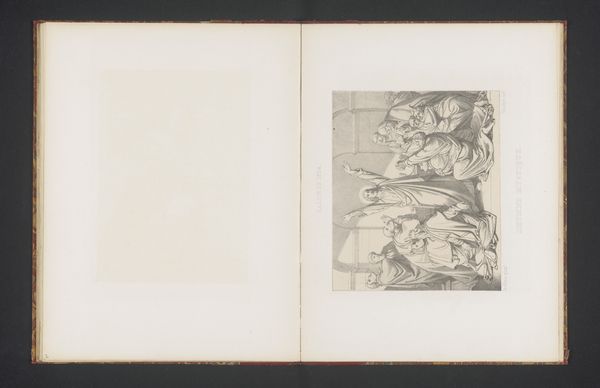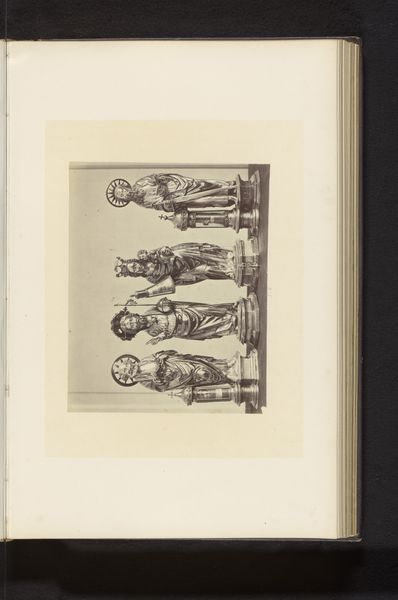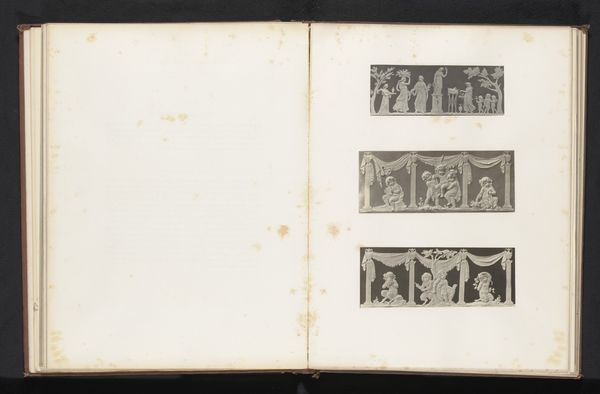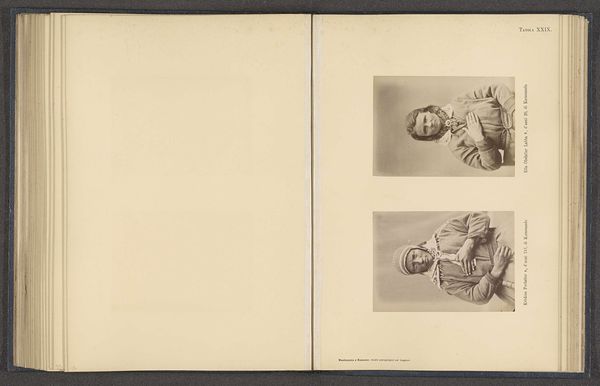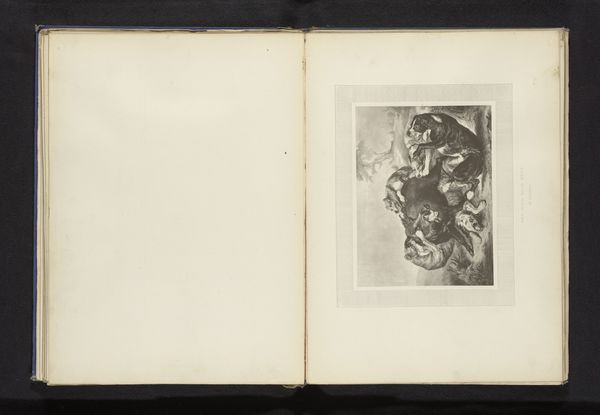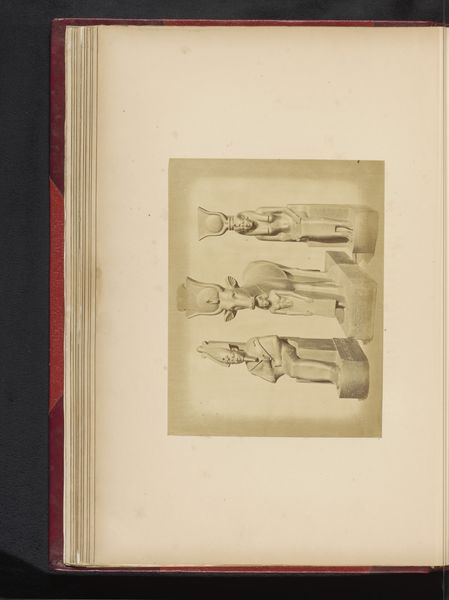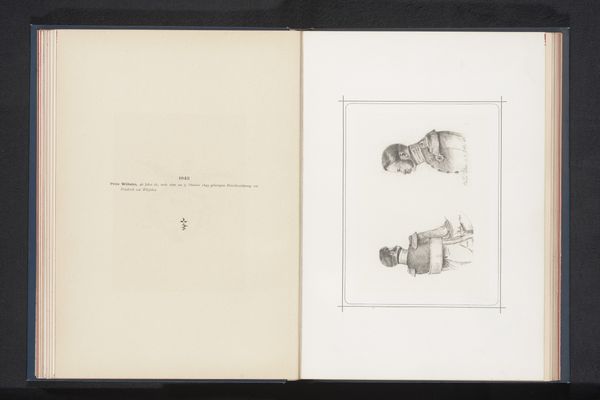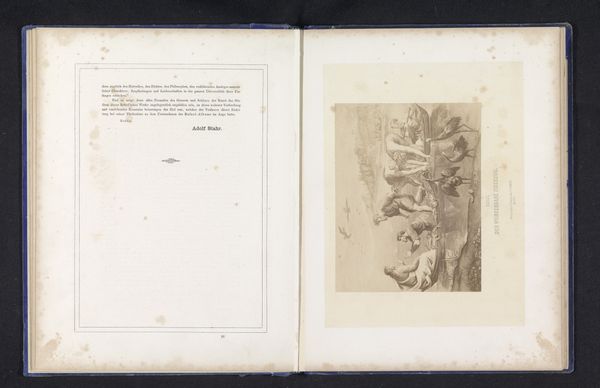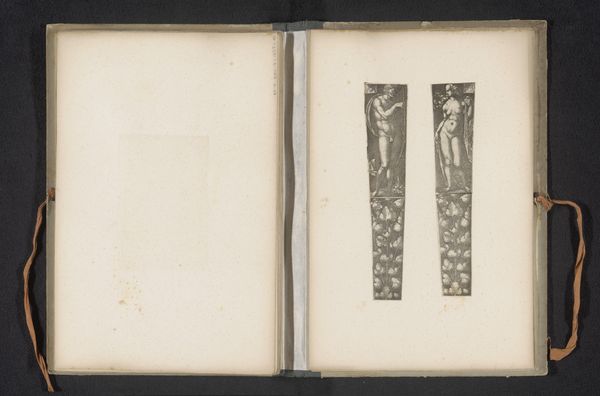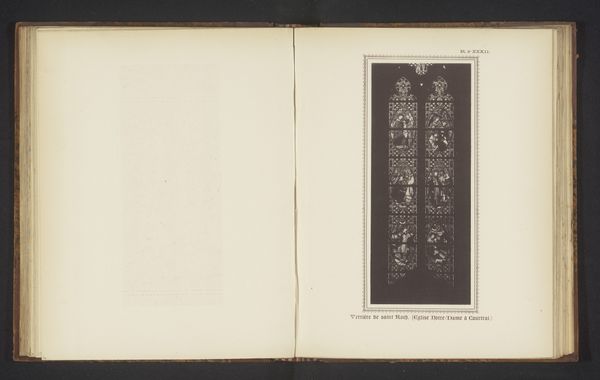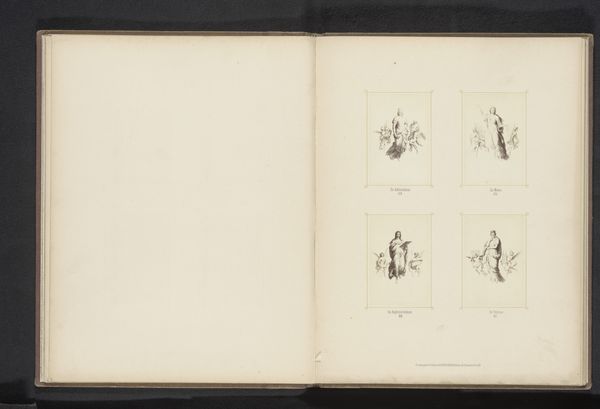
Reproductie van drie schetsen, afgebeeld Sint Basilius, Maria met Christus als kind en Sint Barbara before 1896
0:00
0:00
drawing, print, ink
#
portrait
#
drawing
#
medieval
# print
#
figuration
#
ink
#
cross
Dimensions: height 201 mm, width 126 mm
Copyright: Rijks Museum: Open Domain
Curator: This open book displays a page from a publication entitled, "Reproductie van drie schetsen, afgebeeld Sint Basilius, Maria met Christus als kind en Sint Barbara," or "Reproduction of three sketches depicting Saint Basil, Mary with Christ as a child, and Saint Barbara." The work, attributed to Joseph Casier, dates from before 1896 and appears to be a print made from ink. Editor: My immediate impression is of stillness, almost a reverent hush. The figures, particularly Mary and the child, evoke a sense of deep contemplation and iconic presence despite the monochrome. Curator: It is interesting how this medium of printed sketches makes these important figures more accessible. Instead of gilt and expensive pigments of a traditional altarpiece, this method would permit mass production of holy figures for common consumption. What effect do you think the graphic reproduction has on their sacred aura? Editor: Well, the artist employs well-known visual shorthand—halos, specific garments, Barbara's tower— to convey holiness and virtue instantly. This shorthand ensures recognition and reinforces the figure's cultural significance across different societal strata. Curator: It’s fascinating to consider the labor involved in both the original sketches and their reproduction. The craftspeople converting religious figures into a replicable format would engage in a very physical, commercial task which is an interesting dichotomy to contemplate alongside the piety of the saints shown. Editor: And the reproduction flattens and simplifies. We lose textural nuance, but gain symbolic clarity. The medium turns them into emblems as well as individuals, ideal for disseminating religious tenets across communities through readily-made, available prints. Each symbolic element tells its part in the collective memory. Curator: Exactly. Think too of the socio-economic aspect: Was this sold, gifted, or bound into a larger, expensive book for an elite clientele? These elements impact the art's role in society. Editor: It makes me appreciate the power of imagery and symbolism even in simplified formats. This image makes clear just how strongly iconic representations resonated, no matter their scale or complexity. Curator: The work speaks volumes about art's capacity to democratize as well as express belief and to engage with labor's role in how icons disseminate widely throughout society. Editor: I am struck anew by how lasting visual forms create a legacy—it’s a reproduction of a memory in itself.
Comments
No comments
Be the first to comment and join the conversation on the ultimate creative platform.
